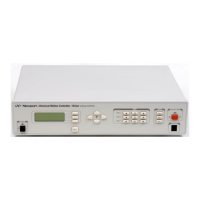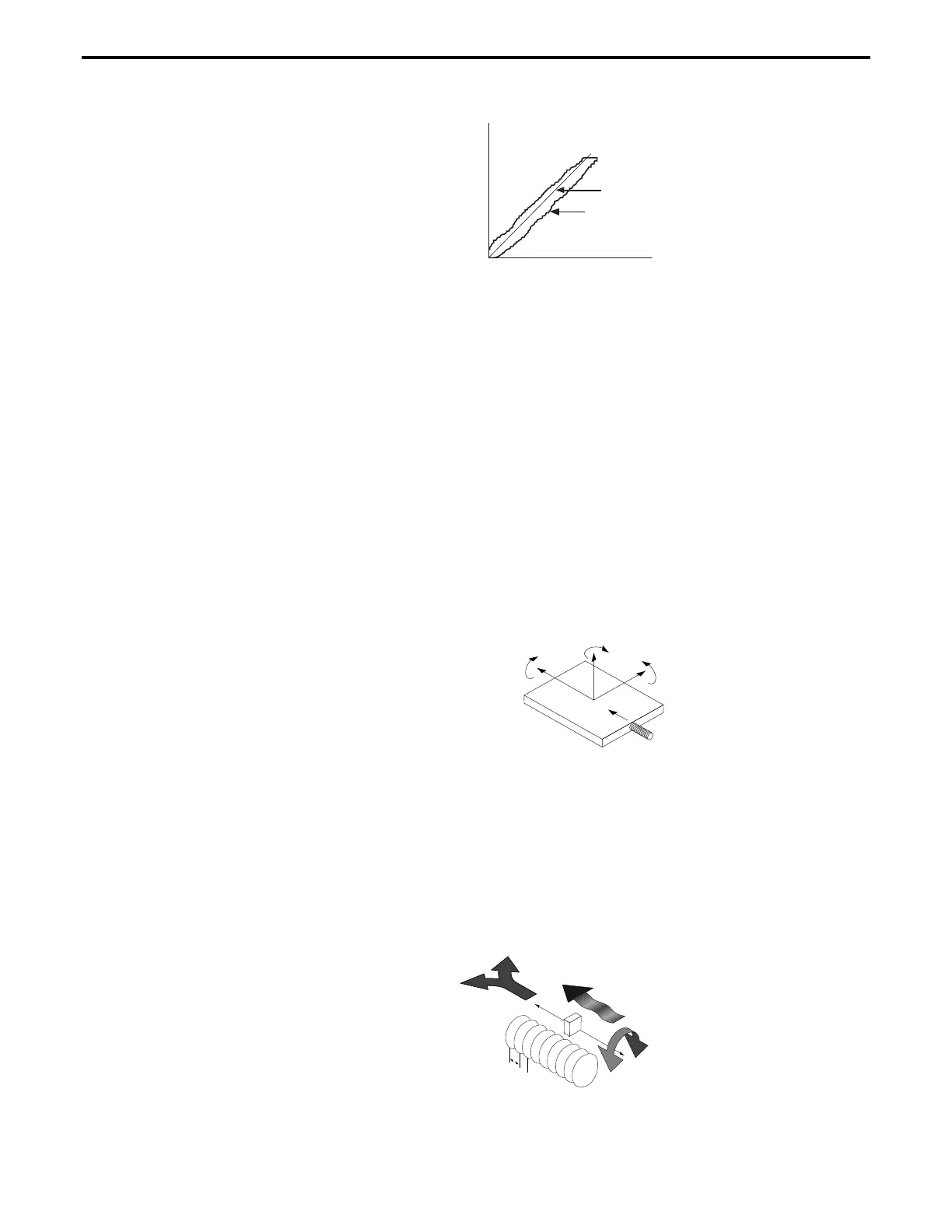Real
position
Trajectory (ideal position)
ideal plot
real plot
Figure 5.8: Real vs. Ideal Position
To justify a little more why we call this Hysteresis, lets do the same
graph in a different format (
Figure 5.8). Plotting the real versus the
ideal position will give the user a familiar hysteresis shape.
5.2.9 Pitch, Roll and Yaw
These are the most common angular error parameters for linear
translation stages. They are pure mechanical errors and represent the
rotational error of a stage carriage around the three axes. A perfect
stage should not rotate around any of the axes, thus the Pitch, Roll and
Yaw should be zero.
The commonly used representation of the three errors is shown in
Figure 5.9. Pitch is rotation around the Y axis, Roll is rotation around
the X axis, and Yaw is rotation around the Z axis.
Pitch
Yaw
Roll
X
ZY
Figure 5.9: Pitch, Roll and Yaw Motion Axes
The problem with this definition is that, through correct, it is difficult
to remember. A more graphical representation is presented in
Figure
5.10. Imagine a tiny carriage driven by a giant lead screw. When the
carriage rolls sideways on the lead screw pitch, we call that Pitch.
And, when the carriage deviates left or right from the straight
direction (on an imaginary Y trajectory), we call it Yaw.
Screw
Pitch
Roll
Pitch
Yaw
Figure 5.10: Pitch, Yaw and Roll Motion Axes
Section 5 – Motion Control Tutorial 5-9

